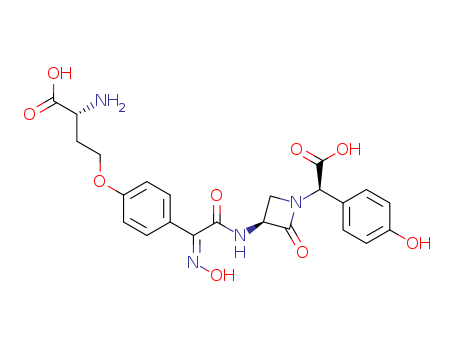10.1016/S0040-4020(01)92150-7
The research focuses on the practical synthesis of intermediates for the preparation of novel 0-sulfonated-N-hydroxy-2-azetidinone antibiotics, which are a class of monocyclic β-lactam antibiotics. The purpose of the study was to develop a simplified and commercially viable synthetic approach to key intermediates for the preparation of these antibiotics, including nocardicins, monobactams, and the new 0-sulfonated N-hydroxy-2-azetidinone antibiotics. The researchers achieved this by hydroxaminolysis of N-protected serine esters to produce hydroxamic acids, followed by acylation and cyclization to yield β-lactams. The process also involved solvolytic deacylation to obtain the parent N-hydroxy-2-azetidinones, which could be further converted to N-unsubstituted 2-azetidinones or the novel 0-sulfonated antibiotics. The chemicals used in the process included N-protected serine esters, hydroxylamine, acyl groups, and various reagents for cyclization and purification steps, such as pyridine-SO3 for the final step to produce the 0-sulfonated N-hydroxy-2-azetidinones. The conclusions of the research indicated that the developed synthetic approach was practical, did not require expensive reagents, and minimized the use of chromatography, making it a potentially commercially viable method for producing these antibiotics.




